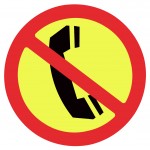I’m kind of particular about what I spend my time reading. There’s just not enough time in the day for reading badly written blogs, yet small businesses trying hard to get some momentum, some attention, frequently turn to putting out blogs that aren’t well written just for the sake of getting more eyeballs. Not a good strategy since your blog can contribute to your overall brand.
I don’t know the author, but if you have a few extra minutes and want a good example of what not to do, go to “The Hyperlink In Between Written Content for Sites and Branding.” I’m not sure whether they were making a joke to make a point but I’m sure you’ll see what I mean.
Here are some of my thoughts:
- Make Sure that Punctuation and Spelling are Correct-This seems obvious but I must admit, I see mistakes all of the time. It is really about attention to the details. If you are focused on the details in your blog, then you’re probably focused on the details of serving your customer. For some great direction and many humorous tips, I recommend Liz Craig’s blog.
- Give People Credit Where Credit Is Due -As was once said, “when you steal from one person it is called plagiarism, yet when you steal from many, it’s called research.” (I can’t remember who to give credit to for this quote) It is really easy to put links into your blogs that will take readers to your source’s website if they would like to learn more. It helps their website by having an inbound link and it is the right thing to do.
- Be Careful When Using Humor-It is really a cool thing if you have the talent to be funny when you write but you know, it’s not really all that easy. That’s why comedy writers get paid so much. What seems funny to you may not be to your readers and in fact could alienate them. If you are a frustrated comedy writer and your blog is your outlet, use humor cautiously and judiciously.
- Give your Opinion on Your Subject-If all you’re providing is information, people can go to a zillion places on the Internet to get information. What people really want to know is what your spin on this subject is. Why do you have a passion to write about it? Let people inside your head (I know in my case that’s a scary place to be) so they’ll get to know you and you become a person to them instead of just a company. This is where you can build trust.
- Have Fun and Tell Stories-People will travel far to hear a good story. Surely you have actual life experiences that can bring a rich texture to your subject and help your readers relate to what you’re saying. It will gain you many loyal readers.
I’d love to know your thoughts.
David



